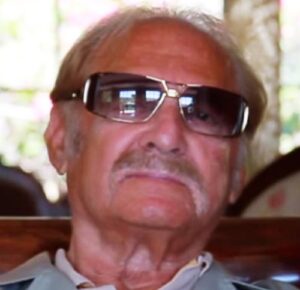
Filmmaker Richard Rush, who received two Oscar nominations for his 1980 film, The Stunt Man, starring Peter O’Toole, died on April 8 in Los Angeles at the age of 91.
According to Claude, his wife of 48 years, Rush had been suffering from longtime health issues, although he died comfortably at home.
In a statement, she said, “He will be remembered for a string of landmark films in the 1960s and ’70s, culminating with his 1980 multi-Oscar-nominated classic, ‘The Stunt Man,’ which is widely regarded as one of the greatest films of all time. To those who were privileged to know and love him, he will be even more warmly remembered, and missed, for his integrity, his loyalty, his endless generosity of spirit and his boundless support and mentorship of other filmmakers, writers or indeed anyone who ever dared to, in the words of his ‘Stunt Man’ hero Eli Cross, ’tilt at a windmill.’”
Rush’s Oscar nomination for adapted screenplay of Paul Brodeur‘s novel The Stunt Man was shared with Lawrence B. Marcus, and Rush received an Oscar nomination for his direction, while O’Toole received one of his many acting nominations for his performance in the film.
Rush first received attention as a director for his 1968 film, Psycho-Out, in which Susan Strasberg played a deaf runaway who arrives in San Franciso looking for her brother, played by Bruce Dern. He followed that in 1970 with Getting Straight, his first studio film for Columbia Pictures, starring Elliott Gould and Candice Bergen. Rush then directed Freebie and the Bean, the 1974 action-comedy, starring James Caan and Alan Arkin as police.
Born in New York City, Rush was one of the first students at UCLA’s film program. After graduating he worked for the U.S. military creating TV programs highlighting the nation’s involvement in the Korean War. At the time Rush agreed with the involvement of the American military in the region, but his participation in this conflict was a defining event for the director.
He then spent several years working for Roger Corman, his first film as a director being the 1960 teen exploitation film, Too Soon to Leave, in 1960, starring a young Jack Nicholson, which led to the 1963 film, Of Love and Desire, starring Merle Oberon and Curd Jurgens. Other films included 1967’s Thunder Alley, starring Annette Funicello and Fabian, as well as the comedy The Cups of San Sebastian, starring Tab Hunter, and Hell’s Angels on Wheels, again starring Nicholson, both also in 1967.
Many years after his success with The Stunt Man, Rush co-wrote the screenplay for Roger Spottiswoode‘s 1990 movie Air America, starring Mel Gibson and Robert Downey, Jr., and then his final film was the Bruce Willis erotic thriller Color of Night in 1994, co-starring Jane March.
Besides the aforementioned wife Claude, Rush had a son, Anthony, and a grandson, Shayne.
Some of the information for this story was provided by Variety.





